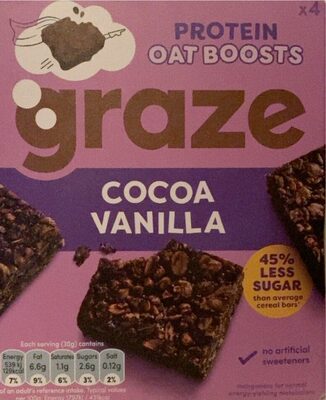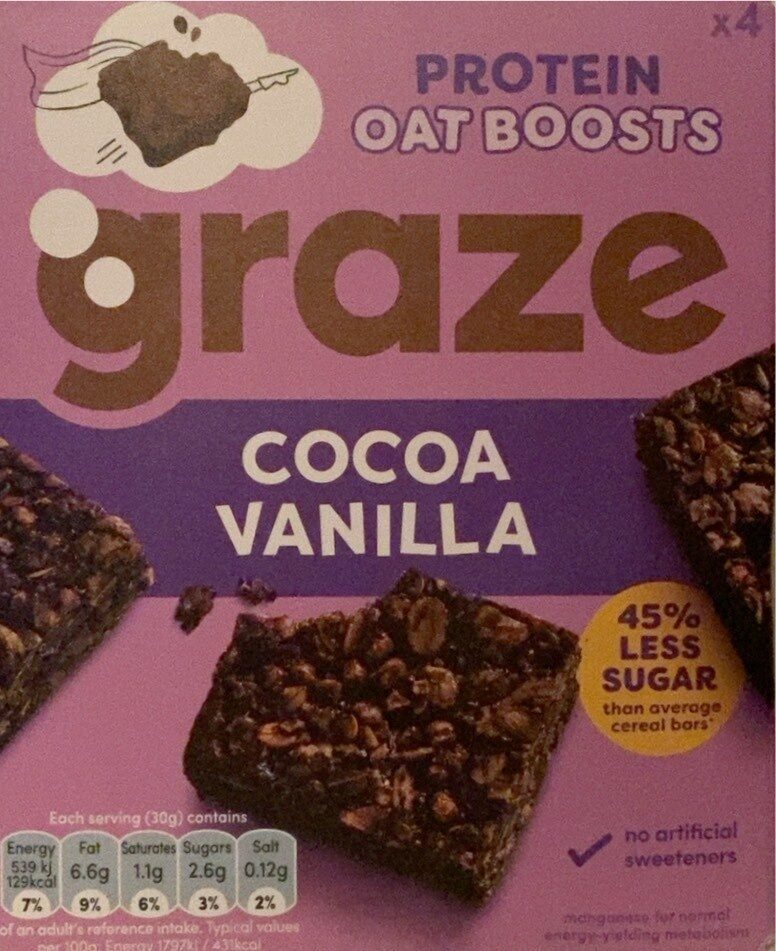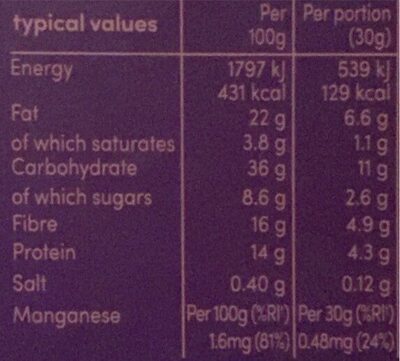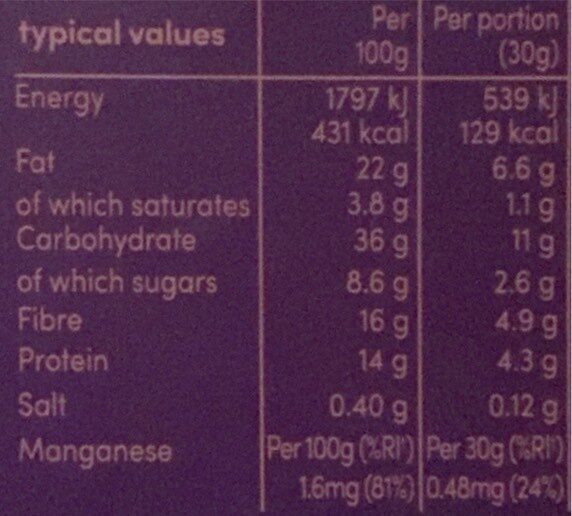Graze Protein Boosts Cocoa Vanilla - 4 x 30 g
This product page is not complete. You can help to complete it by editing it and adding more data from the photos we have, or by taking more photos using the app for Android or iPhone/iPad. Thank you!
×
Barcode: 5055958701054 (EAN / EAN-13)
Quantity: 4 x 30 g
Packaging: en:Card-box
Brandaí: Graze
Catagóirí: en:Snacks, en:Sweet snacks, en:Bars, en:Cereal bars, en:Dietary supplements, en:Bodybuilding supplements, en:Protein bars
Country: An Fhrainc, An Ríocht Aontaithe
Matching with your preferences
Environment
Packaging
Transportation
Threatened species
Report a problem
Data sources
Product added on ag kiliweb
Last edit of product page on ag roboto-app.
Product page also edited by autorotate-bot, mynamesjo, openfoodfacts-contributors, swipe-studio, yuka.ZkpwYkM3NDZuOGt1bWZBajgwcnh5OGwwM2NlSFpWS0llKzFQSVE9PQ, yuka.sY2b0xO6T85zoF3NwEKvlksWV-LbuwvvEAH4sF-129eIH6b6RdBMvIzaKag, yuka.sY2b0xO6T85zoF3NwEKvln1ZCvDiiBX8KS7Qu12a2PSkNIDGa44v8tjTL6g.










